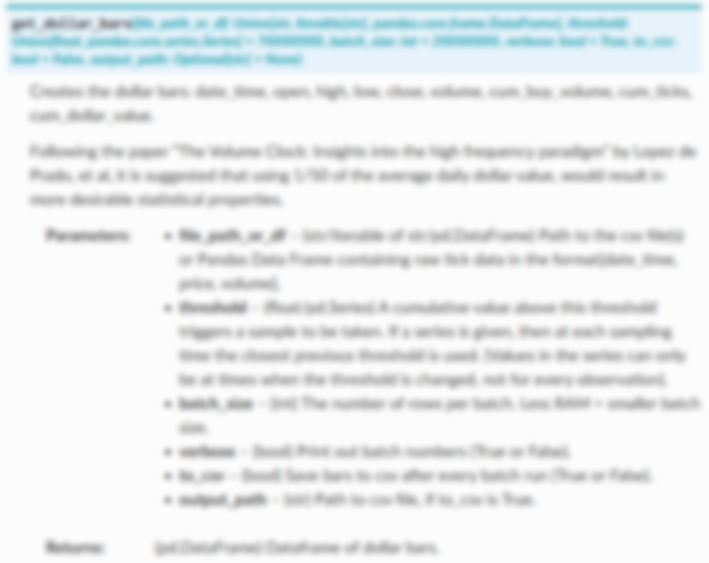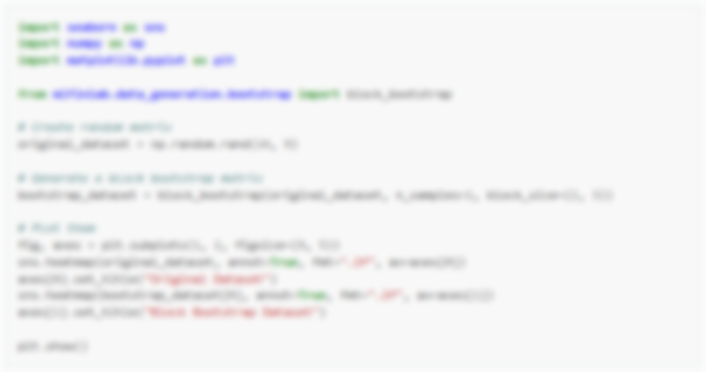Information-driven bars are based on the notion of sampling a bar when new information arrives to the market. The two types of information-driven bars implemented are imbalance bars and run bars. For each type, tick, volume, and dollar bars are included.
For those new to the topic, it is discussed in the graduate level textbook: Advances in Financial Machine Learning, Chapter 2.
Warning
This is a very advanced financial data structure with very little to no academic papers written about them. Our team has analysed the statistical properties and its not clear to us how to use this structure.
We highly recommend that you read the literature, plus that of microstructural features before committing to this data structure.
Run Bars¶
Run bars share the same mathematical structure as imbalance bars, however, instead of looking at each individual trade, we are looking at sequences of trades in the same direction. The idea is that we are trying to detect order flow imbalance caused by actions such as large traders sweeping the order book or iceberg orders.
2 types of run bars are implemented in MlFinLab:
Expected number of ticks, defined as EWMA (book implementation)
Constant number of expected number of ticks.
Implementations¶
There are 2 different implementations which have been discussed in the previous section.

